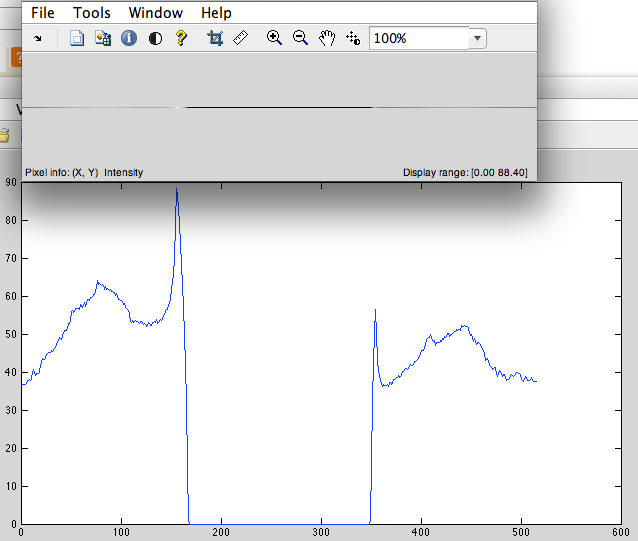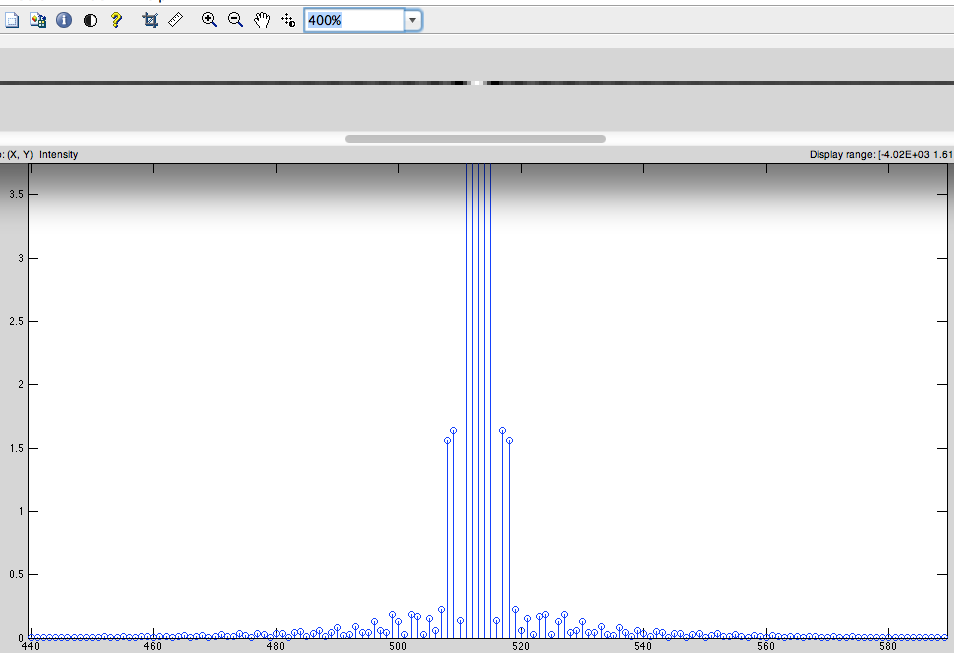I have the task related to Radon transform which contains a subtask which uses resampling by means of DFT.
Let's consider the non-periodical discretized signal (Fig.1) (for example the string of pixels) having 515 pixels length. In my implementation for resampling contains following steps:
- Cyclic left shift (Fig.2).
- Add zeros to the center in order to the length of signal became 2^n (in our case 1024-515 = 509 zeros we must have add) (Fig. 3).
- Get DFT from this signal (Fig. 4).
- Cyclic right shift. (for shifting low frequencies to the center) (Fig.5)
Fig.1

Fig.2

Fig.3

Fig.4

Fig.5

The main question:
Why we must perform cyclic shift of the signal and add zeros exactly in the center? (I assumed what this made the signal periodic) Zeropadding makes interpolation DFT spectrum, is it correct? (I asked and someone says what it is not quite so) Maybe someone can explain in simple way what happens with signal after zeropadding.
I have made some experiments in a Matlab and found out that any other sequence of actions can not give required result.
Now let's consider two cases:
a) (THIS CORRECT VARIANT) We has the non-periodical discretized signal (for example the string of pixels) which will be cyclic shifted to left and filled zeros in the center after that will be obtained DFT from this and to shift it back.

b) We has the non-periodical discretized signal (for example the set strings of pixels) which will be filled zeros from left and right after that will be obtained DFT from this.

What the difference these DFT spectrums?
I have read some books but not found the answer of this zeropadding's case. It seems this can be found only by own experience.
Answer in book:
A. C. Kak and Malcolm Slaney, Principles of Computerized Tomographic Imaging, Society of Industrial and Applied Mathematics, 2001 on page 25
